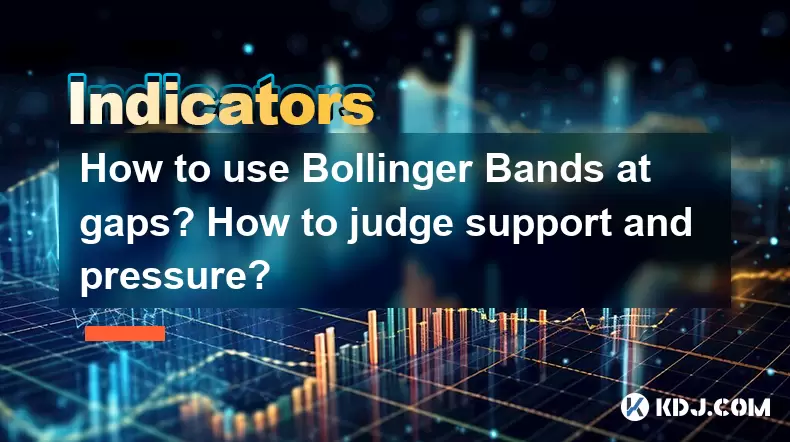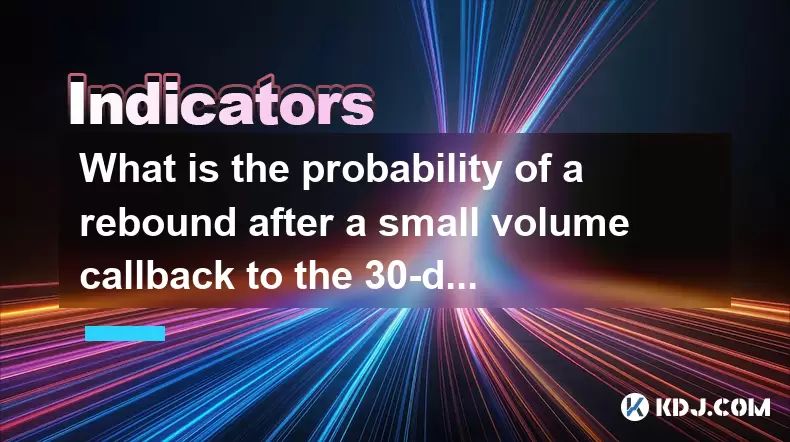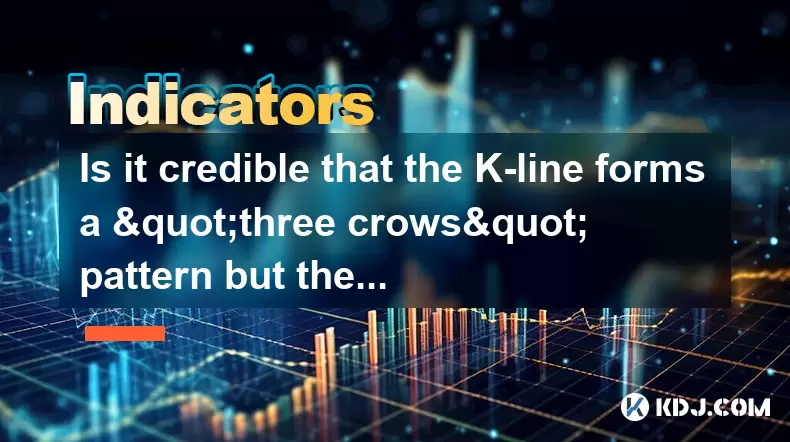-
 Bitcoin
Bitcoin $105,497.5085
4.42% -
 Ethereum
Ethereum $2,422.4861
8.54% -
 Tether USDt
Tether USDt $1.0008
0.06% -
 XRP
XRP $2.1637
7.27% -
 BNB
BNB $640.6631
3.94% -
 Solana
Solana $144.7501
9.37% -
 USDC
USDC $1.0000
0.01% -
 TRON
TRON $0.2732
3.36% -
 Dogecoin
Dogecoin $0.1648
8.94% -
 Cardano
Cardano $0.5829
7.81% -
 Hyperliquid
Hyperliquid $38.1039
6.54% -
 Sui
Sui $2.8200
15.09% -
 Bitcoin Cash
Bitcoin Cash $463.0927
1.91% -
 Chainlink
Chainlink $12.9052
10.84% -
 UNUS SED LEO
UNUS SED LEO $9.1023
1.10% -
 Stellar
Stellar $0.2456
7.38% -
 Avalanche
Avalanche $18.0376
9.64% -
 Toncoin
Toncoin $2.9069
6.48% -
 Shiba Inu
Shiba Inu $0.0...01160
10.05% -
 Litecoin
Litecoin $85.0951
6.12% -
 Hedera
Hedera $0.1513
13.24% -
 Monero
Monero $308.4459
3.65% -
 Ethena USDe
Ethena USDe $1.0008
0.04% -
 Polkadot
Polkadot $3.4084
8.03% -
 Dai
Dai $1.0003
0.02% -
 Bitget Token
Bitget Token $4.1719
3.32% -
 Uniswap
Uniswap $6.8443
9.44% -
 Pepe
Pepe $0.0...09942
12.13% -
 Pi
Pi $0.5357
6.85% -
 Aave
Aave $256.4669
12.95%
How to use Bollinger Bands at gaps? How to judge support and pressure?
Bollinger Bands help traders identify overbought or oversold conditions at gaps, aiding in predicting market trends and setting strategic entry and exit points.
May 22, 2025 at 03:42 am

Introduction to Bollinger Bands and Gaps
Bollinger Bands are a popular technical analysis tool developed by John Bollinger. They consist of a middle band being a simple moving average (SMA) and two outer bands that are standard deviations away from the middle band. These bands help traders identify potential overbought or oversold conditions in the market. When it comes to gaps in the cryptocurrency market, these are price levels where the market has jumped from one price to another with no trading in between, often occurring overnight or during periods of high volatility.
Using Bollinger Bands at gaps can provide valuable insights into market trends and potential reversal points. By understanding how these tools interact, traders can make more informed decisions about entry and exit points. Additionally, judging support and pressure levels is crucial for any trader looking to navigate the cryptocurrency market effectively. These levels can indicate where the price might find resistance or support, helping to predict future movements.
Understanding Gaps in the Cryptocurrency Market
Gaps in the cryptocurrency market can be classified into three types: breakaway gaps, runaway gaps, and exhaustion gaps. Breakaway gaps occur at the start of a new trend, runaway gaps happen during the continuation of a trend, and exhaustion gaps signal the end of a trend. Each type of gap provides different information about market sentiment and potential future movements.
When a gap appears, it often indicates a significant shift in market dynamics. For instance, a breakaway gap might suggest that a cryptocurrency is entering a new bullish or bearish phase. Traders can use this information to adjust their strategies accordingly. Recognizing the type of gap can help in determining whether it's a good time to enter or exit a position.
Using Bollinger Bands at Gaps
When a gap occurs, Bollinger Bands can help traders understand the volatility and potential direction of the market. Here's how to use Bollinger Bands effectively at gaps:
Identify the Gap: First, confirm the presence of a gap by looking at the price chart. A gap will be evident when there is a space between the closing price of one period and the opening price of the next.
Observe the Bollinger Bands: After identifying a gap, check the position of the price relative to the Bollinger Bands. If the price is near the upper band, it might indicate overbought conditions, while a position near the lower band could suggest oversold conditions.
Watch for Band Squeezes: A band squeeze occurs when the Bollinger Bands come closer together, indicating low volatility. A gap following a band squeeze can signal the start of a new trend, making it a critical time to pay attention to market movements.
Analyze the Middle Band: The middle band, which is typically a 20-period SMA, can act as a dynamic support or resistance level. If the price gaps above or below this band, it can indicate a strong move in that direction.
Monitor Price Action: After the gap, observe how the price interacts with the Bollinger Bands. If the price moves back within the bands after a gap, it might suggest a false breakout. Conversely, if the price continues to move away from the bands, it could confirm the new trend.
Judging Support and Pressure with Bollinger Bands
Support and pressure levels are essential for understanding where the price might reverse or continue. Bollinger Bands can help identify these levels in the following ways:
Upper Band as Resistance: When the price approaches or touches the upper Bollinger Band, it often faces resistance. This can be a signal for potential sellers to enter the market, pushing the price down.
Lower Band as Support: Conversely, when the price nears or touches the lower Bollinger Band, it may find support. This could be an opportunity for buyers to enter the market, pushing the price up.
Middle Band as a Pivot: The middle band can act as a pivot point where the price might reverse. If the price gaps above the middle band and then falls back to it, the middle band might act as a new support level. Similarly, if the price gaps below the middle band and then rises back to it, the middle band might serve as a new resistance level.
Band Width: The width of the Bollinger Bands can also provide clues about potential support and pressure. Wider bands indicate higher volatility, which can lead to stronger support and resistance levels. Narrower bands suggest lower volatility, which might result in weaker support and resistance.
Combining Bollinger Bands with Other Indicators
While Bollinger Bands are powerful on their own, combining them with other technical indicators can enhance their effectiveness. Here are some strategies to consider:
Relative Strength Index (RSI): The RSI can help confirm overbought or oversold conditions identified by Bollinger Bands. If the price is near the upper Bollinger Band and the RSI is above 70, it might indicate a strong overbought condition, suggesting a potential reversal.
Moving Average Convergence Divergence (MACD): The MACD can help identify the strength of a trend. If a gap occurs and the MACD confirms a strong bullish or bearish signal, it can provide additional confidence in the direction of the move.
Volume: High volume accompanying a gap can confirm the validity of the move. If the price gaps and the volume is significantly higher than average, it suggests strong market interest, which can reinforce the signals provided by Bollinger Bands.
Practical Example of Using Bollinger Bands at Gaps
To illustrate how to use Bollinger Bands at gaps, let's consider a hypothetical example with a cryptocurrency called XYZ Coin:
Scenario: XYZ Coin experiences a gap up from $100 to $110 overnight. The Bollinger Bands on the daily chart show the price gapping above the upper band.
Analysis: The gap up suggests a potential bullish trend. The price is now above the upper Bollinger Band, indicating overbought conditions. However, the volume accompanying the gap is significantly higher than average, suggesting strong buying interest.
Action: Given the high volume and the gap above the upper band, a trader might decide to enter a long position, anticipating further upward movement. However, they would also set a stop-loss near the middle band ($100) to protect against a potential reversal.
Monitoring: After entering the position, the trader would monitor how the price interacts with the Bollinger Bands. If the price continues to move away from the upper band, it could confirm the bullish trend. If the price falls back within the bands, it might suggest a false breakout, prompting the trader to exit the position.
Frequently Asked Questions
Q: Can Bollinger Bands predict the exact price movements after a gap?
A: Bollinger Bands provide insights into potential price movements and volatility, but they cannot predict exact price movements. They are best used as part of a broader technical analysis strategy, combined with other indicators and market context.
Q: How often should I adjust the settings of Bollinger Bands when trading gaps?
A: The standard settings for Bollinger Bands (20 periods for the SMA and 2 standard deviations) are generally effective for most trading scenarios. However, traders might adjust these settings based on the specific cryptocurrency and time frame they are trading. It's important to backtest any changes to ensure they improve the effectiveness of the strategy.
Q: Are Bollinger Bands more effective in certain market conditions?
A: Bollinger Bands are versatile and can be effective in various market conditions. They are particularly useful in trending markets, where they can help identify potential entry and exit points. In ranging markets, they can help identify overbought and oversold conditions, although traders should be cautious of false signals.
Q: How can I use Bollinger Bands to manage risk when trading gaps?
A: Bollinger Bands can help manage risk by providing clear levels for setting stop-loss orders. For example, if entering a long position after a gap up, a trader might set a stop-loss near the middle band or lower Bollinger Band to limit potential losses if the price reverses. Similarly, for a short position after a gap down, a stop-loss could be set near the middle band or upper Bollinger Band.
Disclaimer:info@kdj.com
The information provided is not trading advice. kdj.com does not assume any responsibility for any investments made based on the information provided in this article. Cryptocurrencies are highly volatile and it is highly recommended that you invest with caution after thorough research!
If you believe that the content used on this website infringes your copyright, please contact us immediately (info@kdj.com) and we will delete it promptly.
- Circle's Stablecoin Soars: A $62 Billion Power Play
- 2025-06-24 06:25:12
- Ruvi AI: Is It Really Poised to Eclipse Tron and Other Crypto Giants?
- 2025-06-24 07:05:12
- Neo Pepe Coin: The Meme Token Taking Over Crypto Presales
- 2025-06-24 06:45:12
- Solana, Pepe, and Crypto Risk: Navigating the Meme Coin Mania
- 2025-06-24 07:05:12
- COIN Act: Curbing Crypto Profiteering by Public Officials – A Necessary Step?
- 2025-06-24 06:25:12
- Ethereum Whales Accumulate: Smart Money Betting on ETH Rebound?
- 2025-06-24 07:25:16
Related knowledge

What does the continuous rise of the ADX line of the DMI indicator in the downward trend indicate?
Jun 24,2025 at 05:00am
Understanding the DMI Indicator and Its ComponentsThe Directional Movement Index (DMI) is a technical analysis tool that helps traders identify the strength and direction of a trend. It consists of two primary components: the +DI (Positive Directional Indicator) and the -DI (Negative Directional Indicator). The ADX line, which stands for Average Directi...

What is the probability of a rebound after a small volume callback to the 30-day moving average to get support?
Jun 24,2025 at 05:08am
Understanding the 30-Day Moving Average in Cryptocurrency TradingIn cryptocurrency trading, the 30-day moving average (MA) is a widely used technical indicator that helps traders identify potential support and resistance levels. It calculates the average closing price of an asset over the last 30 days, smoothing out short-term volatility and providing a...

How to interpret that the time-sharing chart shows "volume and price rise together" but the MACD red column shortens?
Jun 24,2025 at 01:08am
Understanding the Concept of 'Volume and Price Rise Together'In cryptocurrency trading, when a time-sharing chart shows that both volume and price rise together, it is typically interpreted as a sign of strong buying pressure. This means more traders are entering long positions, pushing the price higher while increasing the trading volume. This phenomen...

Is it contradictory that the moving average system is arranged in a bullish pattern but the DMI shows a decline in trend strength?
Jun 23,2025 at 11:43pm
Understanding the Moving Average and DMI RelationshipIn cryptocurrency trading, technical analysis plays a crucial role in identifying potential trends and making informed decisions. Two of the most commonly used indicators are the Moving Average (MA) and the Directional Movement Index (DMI). While both tools aim to provide insight into market direction...

How to interpret that the Williams indicator quickly turns back in the overbought area but does not fall below the 50-axis?
Jun 24,2025 at 02:01am
Understanding the Williams %R Indicator in Cryptocurrency TradingThe Williams %R indicator, often referred to as Williams Percent Range, is a momentum oscillator used by traders to identify overbought or oversold conditions in financial markets, including cryptocurrency. It ranges from 0 to -100, where values above -20 are considered overbought and thos...

Is it credible that the K-line forms a "three crows" pattern but the trading volume decreases?
Jun 24,2025 at 05:56am
Understanding the 'Three Crows' Pattern in Cryptocurrency TradingThe three crows pattern is a well-known bearish reversal signal in technical analysis, often observed when an uptrend transitions into a potential downtrend. This formation consists of three consecutive long red (or bearish) candles with each opening within the body of the previous candle ...

What does the continuous rise of the ADX line of the DMI indicator in the downward trend indicate?
Jun 24,2025 at 05:00am
Understanding the DMI Indicator and Its ComponentsThe Directional Movement Index (DMI) is a technical analysis tool that helps traders identify the strength and direction of a trend. It consists of two primary components: the +DI (Positive Directional Indicator) and the -DI (Negative Directional Indicator). The ADX line, which stands for Average Directi...

What is the probability of a rebound after a small volume callback to the 30-day moving average to get support?
Jun 24,2025 at 05:08am
Understanding the 30-Day Moving Average in Cryptocurrency TradingIn cryptocurrency trading, the 30-day moving average (MA) is a widely used technical indicator that helps traders identify potential support and resistance levels. It calculates the average closing price of an asset over the last 30 days, smoothing out short-term volatility and providing a...

How to interpret that the time-sharing chart shows "volume and price rise together" but the MACD red column shortens?
Jun 24,2025 at 01:08am
Understanding the Concept of 'Volume and Price Rise Together'In cryptocurrency trading, when a time-sharing chart shows that both volume and price rise together, it is typically interpreted as a sign of strong buying pressure. This means more traders are entering long positions, pushing the price higher while increasing the trading volume. This phenomen...

Is it contradictory that the moving average system is arranged in a bullish pattern but the DMI shows a decline in trend strength?
Jun 23,2025 at 11:43pm
Understanding the Moving Average and DMI RelationshipIn cryptocurrency trading, technical analysis plays a crucial role in identifying potential trends and making informed decisions. Two of the most commonly used indicators are the Moving Average (MA) and the Directional Movement Index (DMI). While both tools aim to provide insight into market direction...

How to interpret that the Williams indicator quickly turns back in the overbought area but does not fall below the 50-axis?
Jun 24,2025 at 02:01am
Understanding the Williams %R Indicator in Cryptocurrency TradingThe Williams %R indicator, often referred to as Williams Percent Range, is a momentum oscillator used by traders to identify overbought or oversold conditions in financial markets, including cryptocurrency. It ranges from 0 to -100, where values above -20 are considered overbought and thos...

Is it credible that the K-line forms a "three crows" pattern but the trading volume decreases?
Jun 24,2025 at 05:56am
Understanding the 'Three Crows' Pattern in Cryptocurrency TradingThe three crows pattern is a well-known bearish reversal signal in technical analysis, often observed when an uptrend transitions into a potential downtrend. This formation consists of three consecutive long red (or bearish) candles with each opening within the body of the previous candle ...
See all articles
























































































